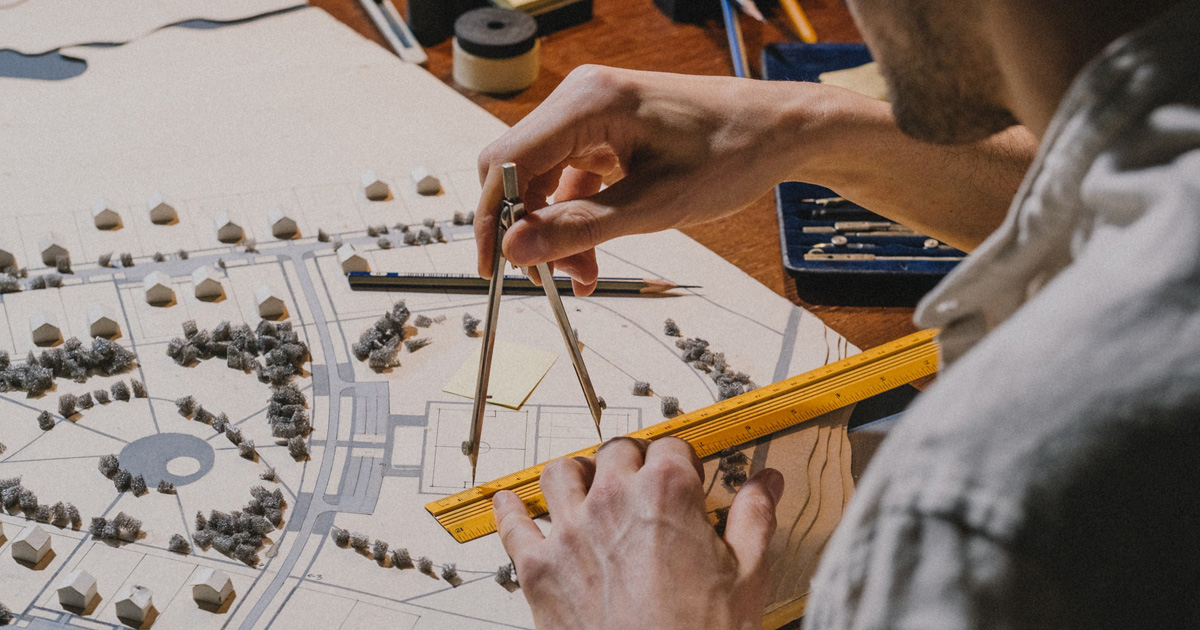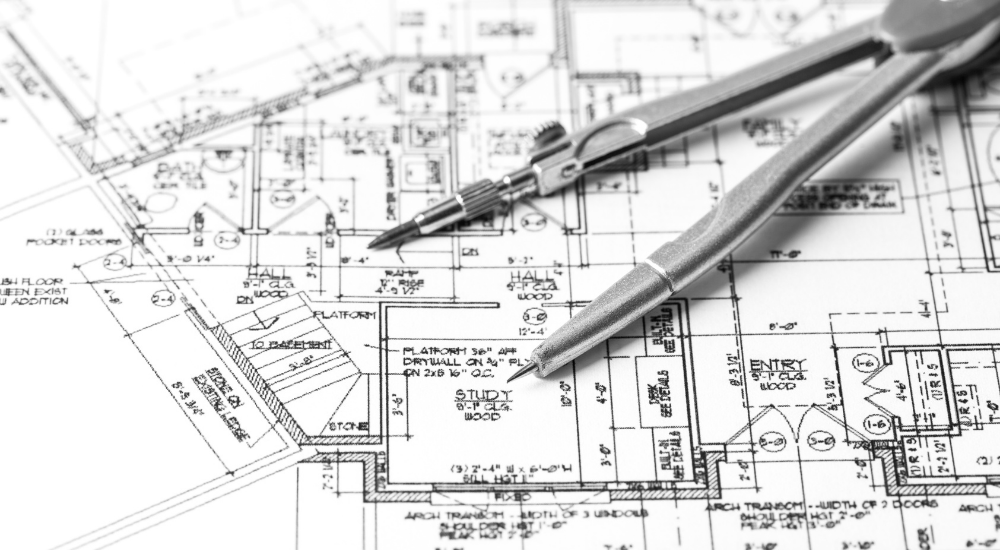Recognizing the Diverse Profession Paths Available for Aspiring Architect
As a hopeful Architect, you have a world of profession courses waiting on you. Each course supplies unique difficulties and opportunities to use your imagination and technical expertise. Whether you're attracted to traditional design or the nuances of sustainable design, there's a particular niche that lines up with your interests. Comprehending these varied options can shape your specialist trip, however which instructions will you select to check out first?
Standard Design: Creating Structures and Frameworks
Conventional design focuses on developing buildings and structures that mix functionality with aesthetic allure. As you explore this area, you'll value the intricate equilibrium in between kind and purpose. You'll learn to draw inspiration from historic designs, including elements like proportion, products, and craftsmanship. Your layouts can mirror social heritage, showcasing regional traditions while satisfying contemporary demands.
You'll develop skills in drafting, model-making, and site evaluation, enabling you to imagine and interact your concepts properly. Involving with customers, you'll need to understand their vision and convert it into viable layouts.
Moreover, constructing codes and sustainability methods are vital in your work, guaranteeing your structures are environmentally pleasant and risk-free. As you grow in your career, you'll discover opportunities in residential, commercial, and even repair projects, each offering special challenges. Welcoming conventional style leads the way for a meeting job that pays homage to the past while shaping the future.
Urban Planning: Shaping Neighborhoods and Public Spaces
As an aspiring Architect, you can play an important duty as a city coordinator, transforming exactly how areas work and engage. By using area engagement techniques, you'll assure that homeowners have a voice in shaping their environment. Plus, incorporating lasting style concepts will certainly aid create spaces that not only satisfy today's needs yet additionally protect the future.
Function of Urban Planners
While several could believe of engineers as the sole visionaries behind buildings, city planners play an important role in shaping the wider landscape of communities and public rooms. By working together with various stakeholders, you'll aid develop parks, transportation systems, and property areas that advertise social communication and availability. Your competence in spatial layout and community dynamics allows you to picture future growth while preserving social heritage.
Neighborhood Involvement Strategies
Efficient neighborhood involvement strategies are important for metropolitan organizers to ensure that the voices of homeowners are heard and valued in the preparation process. To foster purposeful discussion, you must prioritize open forums and workshops where community participants can share their ideas and problems. By actively paying attention and integrating comments, you'll create areas that mirror the area's needs, ultimately leading to even more effective and lasting city atmospheres.
Sustainable Design Principles
When designing city spaces, incorporating lasting style concepts is vital for developing environments that prosper both ecologically and socially. You must start by concentrating on power efficiency, using materials that lower waste and advertise recycling. Consider integrating eco-friendly spaces, like parks and yards, to improve biodiversity and enhance air high quality. Advertising walkability and public transportation can minimize reliance on cars and trucks, fostering a healthier community.
Designing with water conservation in mind is additionally essential-- consider rainfall gardens and permeable surfaces to manage stormwater. Including community participants during the planning procedure warranties that the spaces you produce satisfy their demands and encourage social communication. By embracing these concepts, you'll contribute to vivid, sustainable urban landscapes that benefit every person.

Landscape Architecture: Producing Sustainable Exterior Settings
As you discover landscape style, you'll find necessary design concepts that produce practical and attractive exterior spaces. Sustainable practices play a crucial role in ensuring these settings prosper while minimizing environmental influence. Plus, you'll find a range of profession opportunities that permit you to make a genuine distinction in how individuals connect with nature.
Style Concepts in Landscape
Recognizing design concepts in landscape style is essential for creating sustainable outdoor settings that harmonize with nature. You'll need to contemplate elements like percentage, scale, and equilibrium to guarantee your layouts feel natural and inviting. Additionally, pay attention to seasonal adjustments, creating with materials that enhance the surroundings year-round.
Sustainable Practices Summary
Lasting techniques in landscape design not only concentrate on aesthetics however additionally focus on eco-friendly health and source preservation. By integrating native plants, you improve biodiversity and minimize the demand for chemical plant foods and chemicals. Applying reliable watering systems helps preserve water and lessens drainage, shielding neighboring communities. You can design spaces that advertise dirt health and wellness, such as exercising and utilizing natural materials permaculture principles. Additionally, incorporating environment-friendly infrastructure, like rain yards and permeable sidewalks, aids in stormwater management and lowers metropolitan warmth. When you create outside atmospheres with sustainability in mind, you contribute to a healthier world and supply areas that foster community connection. Ultimately, these practices guarantee your designs benefit both people and the setting for several years to come.
Occupation Opportunities Exploration
With a strong foundation in lasting methods, landscape style supplies a selection of occupation paths that enable you to make a significant effect on the environment. You could function as a landscape developer, producing cosmetically pleasing and practical exterior areas, or specialize in ecological restoration, helping to restore damaged environments. Urban coordinators often work together with landscape engineers to produce environment-friendly spaces in city settings, improving city livability. If you're passionate regarding education and learning, take into consideration coming to be a landscape style educator, motivating future generations. Additionally, you could collaborate with nonprofits concentrated on environmental sustainability or engage in study to innovate new techniques. Each path not only shapes lovely atmospheres useful content yet additionally cultivates a healthier planet for future generations.
Sustainable Design: Concentrating On Eco-Friendly Practices
As you explore your career in style, embracing eco-friendly methods can establish you apart in an affordable area. Lasting layout concentrates on producing buildings that reduce environmental influence while improving occupant well-being. By integrating eco-friendly products, energy-efficient systems, and sustainable structure strategies, you'll add to a greener future.
Begin by obtaining expertise of environment-friendly certifications like LEED or BREEAM, which can bolster your credentials. Take into consideration exactly how natural light, air flow, and thermal effectiveness can optimize layout. Work together with engineers and ecological professionals to introduce services that decrease waste and preserve sources.
Don't fail to remember the significance of community involvement-- interesting local stakeholders can motivate styles that harmonize with the atmosphere. As customers increasingly focus on sustainability, your proficiency in environmentally friendly methods will not just draw in jobs but additionally meet your passion for accountable design. Accept this critical element of the career, and watch your job flourish.
Historical Preservation: Shielding and Recovering Social Heritage
While you start on your architectural journey, consider the necessary role of historical preservation in preserving our cultural heritage. This area concentrates on the security and remediation of considerable buildings, websites, and structures that tell the tales of our past. By taking part in historic conservation, you'll assist secure the building legacy that forms community identification.
As a historical preservation Architect, you'll assess historical importance and evaluate the condition of frameworks. You'll work very closely with chroniclers and conservationists to ensure genuine repair methods are used. This job course permits you to mix imagination with study, allowing you to develop solutions that value original materials and workmanship.
Your job not only contributes to sustainability by recycling existing structures yet also fosters a feeling of satisfaction within areas. Welcoming this path will help you come to be a guardian of history, protecting the tales and visual appeals that enhance our lives.
Interior Architecture: Enhancing Indoor Spaces
Historical preservation and interior design both share a commitment to boosting the constructed setting, but they concentrate on different aspects. While historical conservation highlights maintaining a structure's social and historic worth, indoor architecture nos in on enhancing indoor rooms for capability and aesthetic appeals.
As a hopeful Architect, you'll find that indoor style enables you to mix creativity with technological abilities. You'll develop spaces that not only look great yet also advertise convenience and effectiveness. This area entails understanding how light, shade, and products engage within a room, influencing mood and usability.
You'll work with various tasks, from property homes to industrial offices, guaranteeing that each environment meets the demands of its occupants. By prioritizing individual experience, you can change insides into inspiring and useful rooms, making a significant effect on how individuals interact with their environments. Embrace the chance to improve interior settings and shape the additional resources way people function and live.
Industrial Design: Combining Functionality With Looks
Industrial design plays an important function in developing products that effortlessly blend appearances with functionality, making certain that what you make use of daily is not just visually appealing yet likewise practical. As a hopeful Architect, you can engage on your own in this area, concentrating on developing everything from furnishings to consumer electronic devices. Your job entails comprehending customer requirements, materials, and manufacturing procedures, enabling you to produce innovative options that enhance daily experiences.
In industrial style, you'll often team up with engineers, makers, and marketing experts, ensuring that your styles are not just beautiful but likewise feasible. You'll learn to balance kind and feature, focusing on use without giving up style. By developing your skills in mapping out, 3D modeling, and prototyping, you'll be fully equipped to bring your concepts to a fantastic read life. This job course uses a vibrant environment where imagination meets usefulness, making it a fulfilling choice for designers curious about shaping the items of tomorrow.
Regularly Asked Questions
What Educational Credentials Do I Need to End Up Being a Designer?
To become an engineer, you'll require an expert degree in style, commonly a Bachelor's or Master's. Additionally, you'll have to finish a teaching fellowship and pass the Architect Enrollment Evaluation to practice legitimately.
Exist Certification Requirements for Various Building Occupation Paths?
Yes, there're certification requirements for different architectural paths. Architect. You'll need to pass examinations, total internships, and in some cases pursue specialized training, depending upon your chosen focus, like landscape design, urban design, or historic preservation
What Software Skills Are Vital for Designers Today?

Just How Can I Gain Practical Experience While Researching Design?
You can acquire functional experience by interning at architectural firms, taking part in layout competitors, volunteering for area tasks, or collaborating with classmates on real-world assignments. These possibilities enhance your skills and develop beneficial links in the sector.
What Task Opportunities Exist Outside Traditional Style Firms?
You can discover numerous work chances outside standard architecture companies, like metropolitan preparation, indoor style, landscape architecture, building and construction administration, property development, and even functions in sustainability consulting. Each deals special obstacles and rewards.
Whether you're drawn to traditional style or the nuances of sustainable style, there's a specific niche that lines up with your passions.When developing metropolitan rooms, including lasting design concepts is critical for creating settings that flourish both ecologically and socially.As you explore landscape architecture, you'll uncover crucial design concepts that produce gorgeous and useful exterior spaces.Understanding design principles in landscape style is vital for creating lasting exterior environments that harmonize with nature.In commercial design, you'll usually team up with designers, producers, and marketers, ensuring that your styles are not only stunning yet also practical.